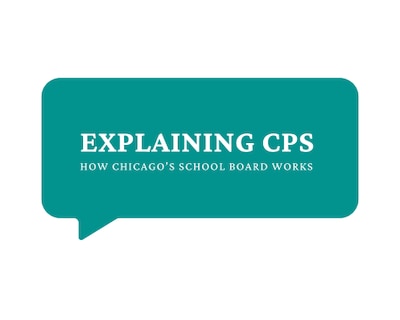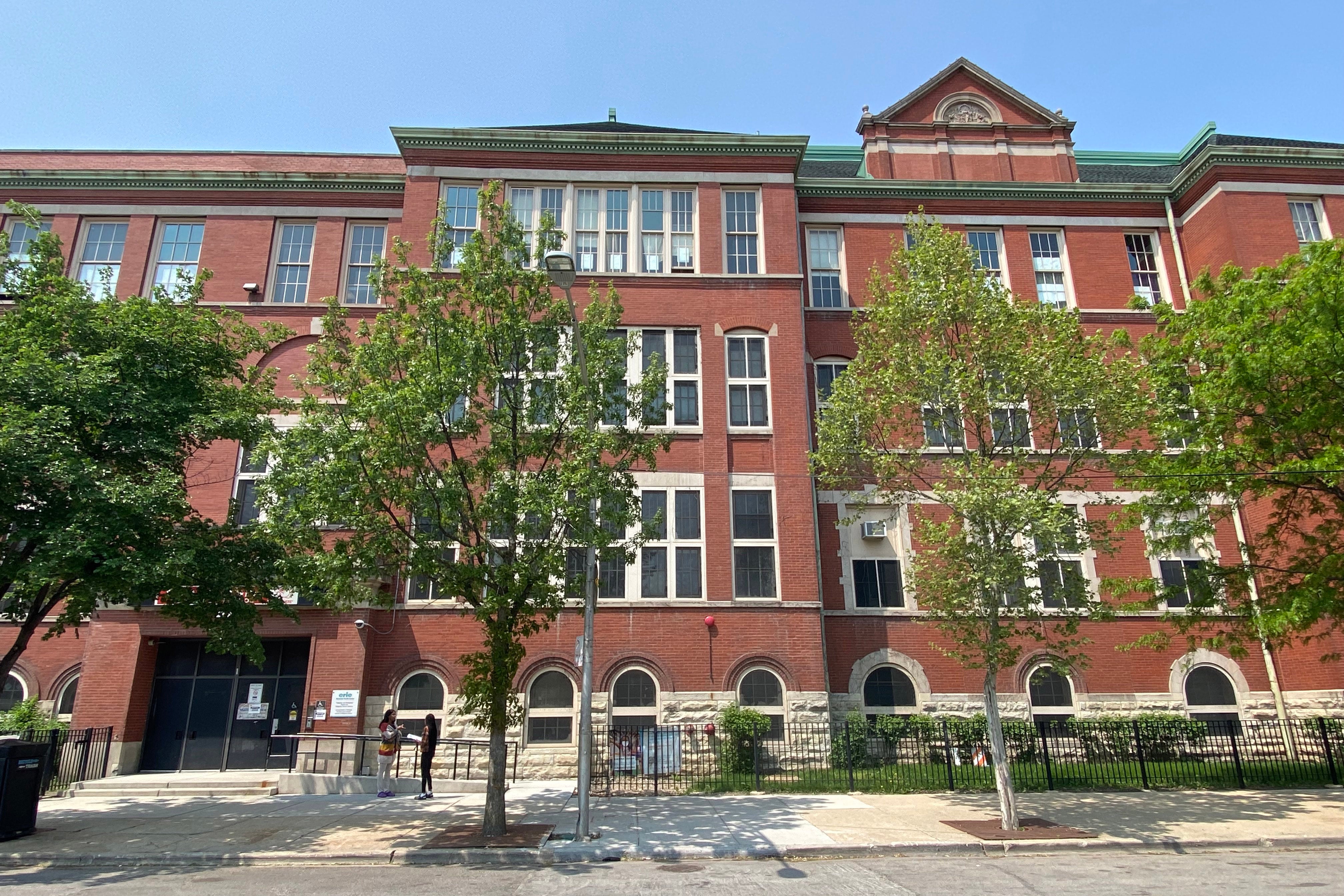Sign up for Chalkbeat Chicago’s free daily newsletter to keep up with the latest education news.
The Chicago Board of Education owns more than 800 school buildings, annexes, and other property.
The average age of a Chicago public school building is 83 years and 70 schools operate in facilities built before 1900. The oldest building — James Ward Elementary — was built in 1874 and is 149 years old.
According to the district’s most recent Educational Facilities Master Plan, it would cost $14.4 billion to update and repair all of Chicago’s public school buildings, and of that, $3 billion is considered critical.
Across the nation, school buildings are considered public infrastructure owned by the community and decisions about facilities upgrades and construction typically filter through elected officials who sit on the local school board.

Aging buildings can be a major challenge, especially in urban school districts with large real estate portfolios. In Chicago, decisions about what schools to repair and rebuild each year have been voted on by the school board, but are developed and proposed by district officials, the mayor, and other elected officials, such as city aldermen and state representatives. In the past, the process has been criticized for being inequitable and lacking transparency.
Decisions about what schools to repair and rebuild each year can be fraught and in Chicago, the process has been criticized for being inequitable and lacking transparency.
For decades, the mayor and to some extent other elected officials, such as local aldermen or state lawmakers, have controlled the purse strings when it comes to when and where to build new or repair old schools. Still, the Chicago Board of Education must vote to approve school construction projects and the financing that makes them possible.
That means school board members who will be elected by communities starting this November could influence decisions around school construction. Some school board candidates have already made updating school facilities a core part of their platform.
How does student enrollment impact CPS facilities?
Chicago Public Schools calculates how much each school’s building is being used and labels them using one of three categories: underutilized, efficient, and overcrowded.
Of the roughly 500 school buildings CPS labels with a utilization rate, 287 are tagged as underutilized, 179 are deemed efficient, and 26 are considered overcrowded.
Some have argued that 70% is not a fair cutoff for efficiency and overstates how much of a building is being used. Still, 172 schools are considered less than 50% utilized and 35 are less than 30%.
The district’s utilization data is seen by some as a lightning rod because it was used to inform which 50 schools would close in 2013. Chicago has not closed schools since then, with the exception of four high schools in Englewood, which were replaced by a new $85 million state-of-the-art STEM school in 2019.
Despite an effort by state lawmakers to extend a moratorium on school closings in Chicago to 2027, the school board will be allowed to shutter buildings beginning Jan. 15, 2025 when the new, 21-member, partially-elected school board will be sworn in.
Chief Operating Officer Charles Mayfield said “a conversation needs to happen” with communities regarding enrollment and school facilities because “everything has a cost to it.”
Low enrollment is more of a challenge facing neighborhoods on the South and West Sides. District data indicates many school-aged children in those areas travel to other communities for school, leaving their local neighborhood schools with fewer students. Under the district’s old budgeting formula, this created a cycle of disinvestment where schools losing students would have to cut staff, which would lead to more students leaving.
For roughly a decade, Chicago’s appointed school board approved closing a handful of schools annually and opening new ones at the same time as it created a school choice system with a variety of specialty schools families could choose in lieu of their zoned schools.
How do school building repairs happen in Chicago Public Schools?
In 2011, state lawmakers passed a law requiring Chicago Public Schools to develop an Education Facilities Master Plan every five years. The district issued its most recent plan in 2023, with an interactive map that allows the public to search school utilization and facility needs.
These reports provide a snapshot of the district’s overall real estate footprint, deferred maintenance, and enrollment patterns. But they do not spell out which schools might be prioritized for capital upgrades.
Chicago’s school board members approve capital projects and the borrowing that often makes them possible.
A Chalkbeat analysis of the district’s facility needs data found that some school board districts are facing much higher facility needs than others.
Where does CPS get school infrastructure money?
Chicago Public Schools develops a capital plan every year to determine which building construction and improvement projects it will undertake.
These capital projects are supported mostly by tax dollars collected by the school district or state, but several other sources of taxpayer money get dedicated to school projects every year. The two most notable sources of funding are tax-increment financing — or TIF — districts and the Chicago School Building and Improvement Fund tax levy.
The tax levy has been authorized by the state legislature since 2002, but it wasn’t until 2015 that it was proposed by then-Mayor Rahm Emanuel and approved by the City Council. It funded nearly $1 billion in capital projects beginning in 2017. Annual revenue collected by the levy continues to pay off the bonds that paid for those projects.
City Council also routinely dedicates money from special tax-increment financing districts to school infrastructure projects. This money regularly pays for new playground equipment, athletic fields, and critical building repairs.
Aldermen control where TIF money – sometimes referred to as a ”slush fund” or “shadow budget” – gets spent and areas with more development tend to have more TIF money available to spend. This can lead to inequities across the city, leaving schools in some areas waiting longer for new playgrounds or updated school facilities. Mayor Brandon Johnson has been an outspoken critic of TIF money and plans to end most of these special taxing districts over the next several years.
A report issued in 2022 flagged the financing of school construction projects as one of several financial entanglements the school board has with City Hall.
Former Chicago Mayor Richard M. Daley’s Modern Schools Across Chicago program issued bonds backed by city and school district funds to spend $1 billion building 17 new facilities and renovating two others, mostly on the South and West Sides.
In 2013, then-mayor Emanuel closed 50 schools and mothballed or sold off school facilities in majority Black and Latino neighborhoods. In 2015, he passed an annual $45 million property tax levy for school construction to bankroll building new annexes in overcrowded areas. The district is still paying off debt from these projects using the school capital improvement tax levy.
Former Mayor Lori Lightfoot allocated more than $215 million in special tax-increment financing dollars to fix up aging buildings. Her CPS administration focused their capital spending on adding pre-K classrooms, technology upgrades, and building accessibility required under the Americans with Disabilities Act, or ADA.
Johnson has yet to take on any major school capital projects. Chicago Public Schools put forward a relatively small $155 million capital budget shortly after he took office and a $611.1 million capital budget for the 2024-25 school year mostly focused on critical repairs and updates.
On the campaign trail, Johnson promised a “Green Schools Facilities Plan” that would focus on making school buildings more energy efficient, installing solar panels, and expanding composting and community gardening at schools. But there’s not been much movement on such a plan.
Becky Vevea is the bureau chief for Chalkbeat Chicago. Contact Becky at bvevea@chalkbeat.org .






